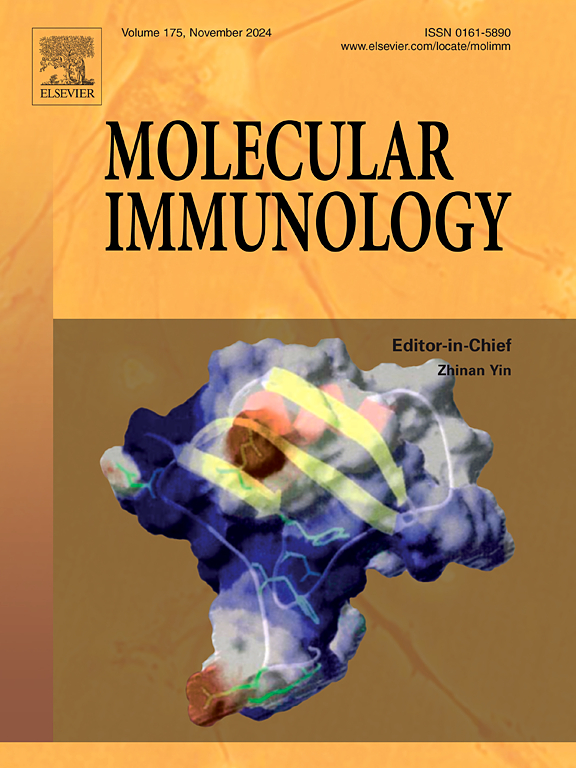Immunological characteristics of peripheral T cells as prognostic markers for Camrelizumab and Apatinib combination therapy in advanced squamous non-small-cell lung cancer
IF 3.2
3区 医学
Q2 BIOCHEMISTRY & MOLECULAR BIOLOGY
引用次数: 0
Abstract
Purpose
To determine the characteristic changes of peripheral blood T cells and identify potential biomarkers that associated with the clinical efficacy of combined immunotherapy and anti-angiogenic therapy in patients with advanced squamous non-small cell lung cancer (NSCLC).
Methods
We performed a comprehensive immunological assessment of peripheral blood mononuclear cell samples from advanced squamous NSCLC patients before and after combination of immunotherapy (Camrelizumab) and anti-angiogenic therapy (Apatinib) using spectral flow cytometry. Correlations between these immunological features and clinical efficacy were analyzed.
Results
Our findings revealed that, following two treatment cycles, the concentration of type 1 T helper (Th1) cells in the peripheral circulation was significantly higher in the responder group than in the non-responder group, correlating with a statistically significant improvement in survival outcomes. Post-treatment, CD137 expression within Th1 cells in the responders, whereas TIM-3 expression was significantly reduced. In the validation cohort, elevated CD4+ CXCR3+ CD137+ cells in the peripheral blood were associated with a positive clinical reaction to the treatment and extended survival.
Conclusions
Our findings suggest that peripheral blood circulating CD4+ CXCR3+ CD137+ cells serve as biomarkers of response to combined immunotherapy and anti-angiogenic therapy in patients with advanced squamous NSCLC, providing potential guidance for improving clinical outcomes.
求助全文
约1分钟内获得全文
求助全文
来源期刊

Molecular immunology
医学-免疫学
CiteScore
6.90
自引率
2.80%
发文量
324
审稿时长
50 days
期刊介绍:
Molecular Immunology publishes original articles, reviews and commentaries on all areas of immunology, with a particular focus on description of cellular, biochemical or genetic mechanisms underlying immunological phenomena. Studies on all model organisms, from invertebrates to humans, are suitable. Examples include, but are not restricted to:
Infection, autoimmunity, transplantation, immunodeficiencies, inflammation and tumor immunology
Mechanisms of induction, regulation and termination of innate and adaptive immunity
Intercellular communication, cooperation and regulation
Intracellular mechanisms of immunity (endocytosis, protein trafficking, pathogen recognition, antigen presentation, etc)
Mechanisms of action of the cells and molecules of the immune system
Structural analysis
Development of the immune system
Comparative immunology and evolution of the immune system
"Omics" studies and bioinformatics
Vaccines, biotechnology and therapeutic manipulation of the immune system (therapeutic antibodies, cytokines, cellular therapies, etc)
Technical developments.
 求助内容:
求助内容: 应助结果提醒方式:
应助结果提醒方式:


